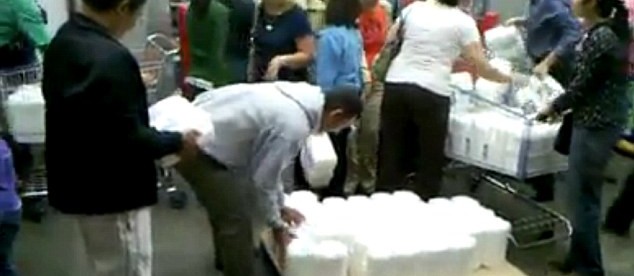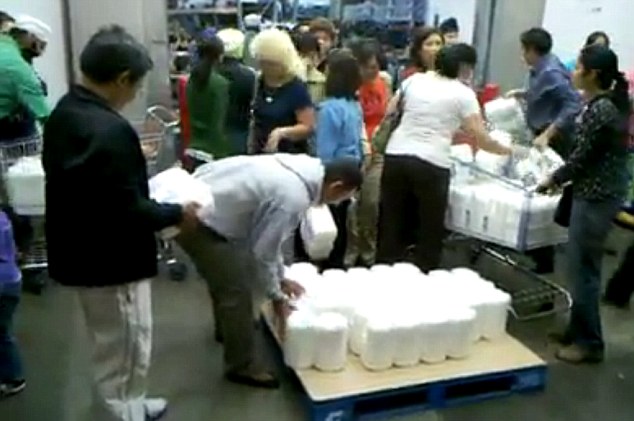What Happens to U.S./Canadian Relations When Milk Prices are Out of Sync

Let’s do some math. The drive from Surrey, British Columbia, Canada, to Bellingham, Washington, U.S.A., is approximately 40 miles (60 km) of mostly highway driving. At, say, 20 miles per gallon — just to make the math easy — you can make a round trip for four gallons of gas. Now imagine that gas cost $5.00/gallon in Surrey (in U.S. dollars) but only $3.89 in Bellingham. A car with an 18-gallon tank could fill up in Bellingham for $70, effectively getting 14 gallons of gas out of the trip. Or, you put 14 gallons into the same car in Surrey — and it would cost you $70. In this situation, the trip from Surrey to Bellingham, in fuel costs at least, is free.In the summer of 2012, part of the hypothetical math problem above was real. The disparity in per-gallon gas prices was, per TIME, roughly what people in the area experienced that year, making it tempting for Canadians to come to the United States to fill up their gas tanks. But saving a few dimes on gas, at most, didn’t warrant the two hours of driving.
The cheap milk, however, did.
Milk prices in the United States are typically much lower than in Canada. As the Huffington Post reported at the time, a Canadian dairy trade group argued that this was a result of differences in national dairy policies — the American government subsidizes milk production, but Canadian dairy farmers do not receive any financial assistance from their government. As a result, if you’re Canadian, you may be well-served by finding a way to buy milk in the United States. That’s where Costco, the “membership-only warehouse club” (to use Wikipedia’s parlance), came into the picture. The Costco in Bellingham, Washington, sold huge amounts of milk at cheaper-than-usual prices, as was its business model. According to one Costco fan’s website, the Vancouver, British Columbia Costco sold a jug of milk for $4.60, while the same sized container was available at the Bellingham Costco for $2.60.

Add in a strong Canadian dollar, relative to the U.S. one, and suddenly, the allure of cheap fuel and cheaper milk proved too much for many Canadians to resist. The milk binge was on. Thousands poured in, week after week, to refuel, buy extraordinary amounts of milk, and while they were at it, buy whatever else they needed at the U.S. Costco. As seen above, via the Daily Mail, the Costco couldn’t keep milk in stock — moments after the product hit the floor (they never even made it into the refrigerators!), shoppers, mostly Canadian, piled the jugs into their carts.
But as a result, the cross-border visitors also overwhelmed the store. Bellingham is home to only 80,000 people; if you extend the area to include the surrounding county, that number only rises to about 200,000. On the other hand, British Columbia is home to 4.4 million, and Surrey alone has 500,000 residents. When news of the cheap milk and gas spread throughout the Canadian communities, the Bellingham Costco suffered long lines at the gas pump, a perpetually full parking lot, and nearly 30 minute checkout lines if you did manage to get inside. Many people of Bellingham felt like they were being invaded.
So some fought back, sometimes literally. Fights broke out in the parking lot and arguments were common and heated; Costco hired extra security to handle the disturbances. Some residents of the town took a more peaceful approach — via social media. They started a now-deleted Facebook page, once here, petitioning the Bellingham Costco to create “American only” store hours during which Canadian customers were not welcome. Nearly 3,000 people signed onto the cause, but Costco didn’t give in to the protest, and the local government sided with the visitors. (Who would turn away all these new customers? And the extra tax dollars?) Likely due to the xenophobia-approaching nature of the protest, the people of Bellingham ultimately backed down. And as prices fluctuated, the lines abated.
Costco decided to do something about the overcrowding anyway. In February of 2015, the company announced that it is building a larger store in Bellingham, scheduled to open in the summer of 2016.
 Bonus Fact: The U.S/Canada border is, by and large, peaceful and rather porous. But it’s still well-demarcated. As CGP Grey explains (that link goes to a video, and it’s great; you should watch the whole thing), the 5,500 mile border is marked by a 20-foot wide gap where all the trees have been cleared away. One side of the treeless area is the U.S. and the other is Canada.
Bonus Fact: The U.S/Canada border is, by and large, peaceful and rather porous. But it’s still well-demarcated. As CGP Grey explains (that link goes to a video, and it’s great; you should watch the whole thing), the 5,500 mile border is marked by a 20-foot wide gap where all the trees have been cleared away. One side of the treeless area is the U.S. and the other is Canada.
From the Archives: Rock the GazBar: Another example where the U.S./Canada border and gasoline didn’t mix all that well.
Take the Quiz: Name the U.S. states that border Canada. There are 13 of them and you have 90 seconds to complete the quiz, making it tougher than you’d expect.
Related: What do you get when you try and combine the American and Canadian flags? Something like this.
